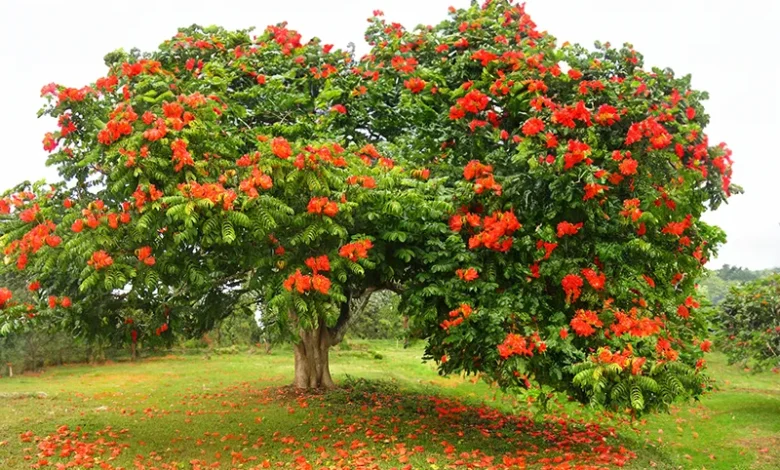African Tulip Tree

The African Tulip Tree (Spathodea campanulata) brings vibrant red-orange blooms to Dominica’s natural landscapes, adding a striking splash of color across the island. Originally from tropical Africa, this tree has spread throughout the Caribbean and is popular for its stunning flowers and rapid growth. However, it is also recognized as an Invasive Species in Dominica, impacting local ecosystems and requiring monitoring to protect the island’s delicate biodiversity.
African Tulip Tree Characteristics and Ecological Impact on Dominica
Growing up to 80 feet, the African Tulip Tree has dark green leaves and clusters of large, bell-shaped flowers that attract pollinators such as bees and birds. Despite its visual appeal, it competes with Endemic Species for resources and space, disrupting local ecosystems.
Under the Ministry of Agriculture, the Forestry, Wildlife and Parks Division plays a central role in managing the spread of such invasive species. Guided by the Environmental Protection Act (2002), conservationists aim to preserve Dominica’s natural heritage by balancing ornamental non-native plants with the need to protect native species. Ongoing conservation efforts strive to mitigate the ecological impact, ensuring Dominica’s landscapes retain their unique environmental makeup.




